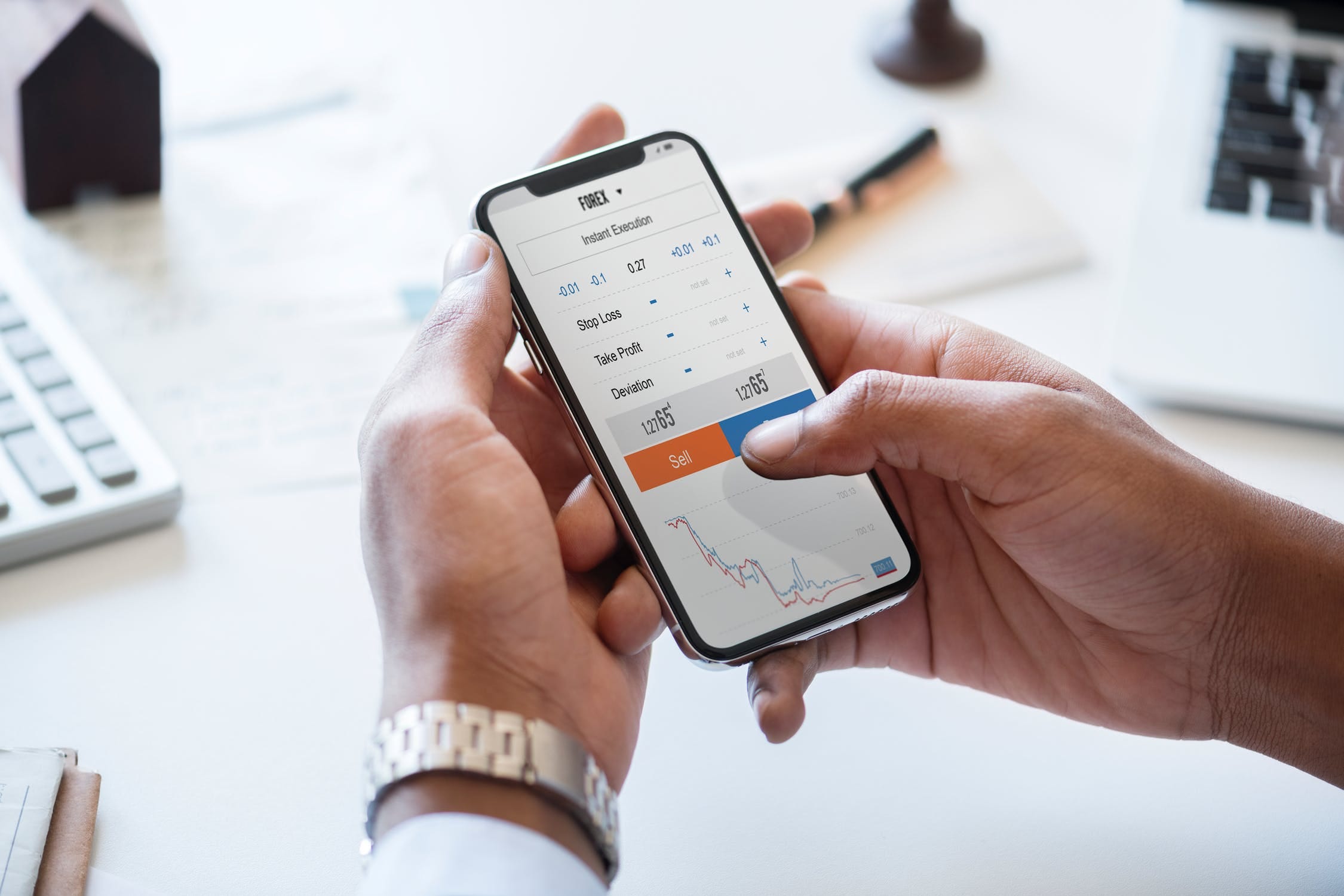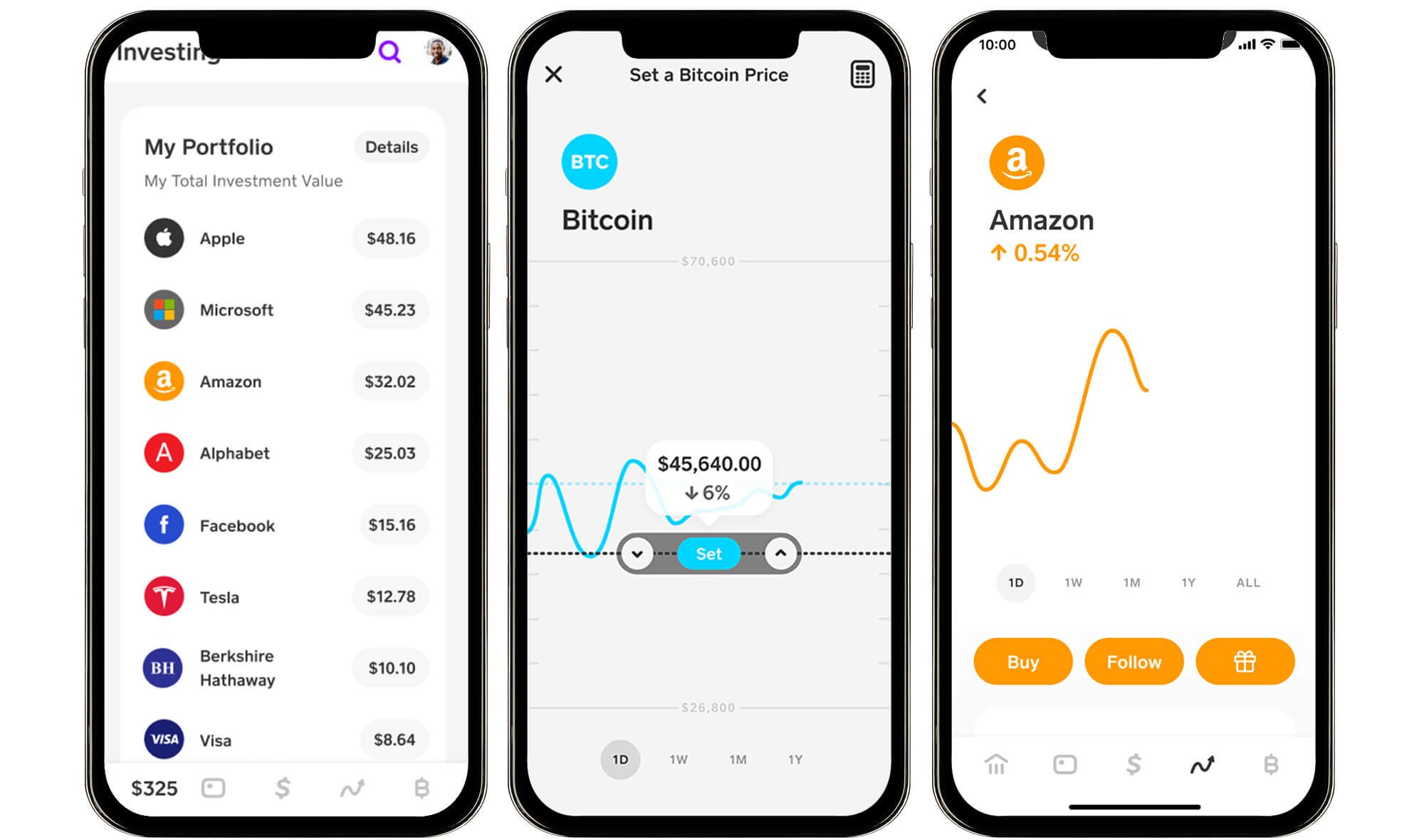

Finance
How The Stock Market App Works
Published: October 20, 2023
Discover how the finance-focused stock market app simplifies investing with user-friendly features, real-time data, and personalized recommendations.
(Many of the links in this article redirect to a specific reviewed product. Your purchase of these products through affiliate links helps to generate commission for LiveWell, at no extra cost. Learn more)
Table of Contents
Introduction
Welcome to the world of stock market trading! Whether you are a seasoned investor or just starting out, having the right tools and resources is crucial for success. That’s where the stock market app comes in. This innovative platform is designed to provide you with real-time market data, analysis tools, and the ability to execute trades right from the palm of your hand.
In today’s fast-paced digital world, the stock market app has become an essential tool for investors. Gone are the days of relying solely on desktop computers or making calls to brokers. With just a few taps on your smartphone or tablet, you can access a wealth of information and instantly make informed investment decisions.
The stock market app offers a comprehensive range of features and functionalities that make it easy for both novice and experienced investors to navigate the complexities of the financial markets. From researching and analyzing stocks to placing trades and monitoring your portfolio, this app puts the power of the stock market right at your fingertips.
Throughout this article, we will dive deeper into the various aspects of the stock market app, exploring the steps involved in registration and account creation, researching stocks, analyzing stock performance, placing buy and sell orders, monitoring your portfolio, setting alerts and notifications, tracking market news and trends, and managing account settings.
By the end of this article, you will have a comprehensive understanding of how the stock market app works, empowering you to make well-informed investment decisions and take control of your financial future.
Overview of the Stock Market App
The stock market app is a powerful financial tool that provides users with access to real-time market data and a wide range of features to help them make informed investment decisions. It serves as a virtual gateway to the world of stocks, allowing users to discover and track stocks, analyze their performance, and execute trades, all from the convenience of their mobile devices.
One of the key features of the stock market app is its user-friendly interface. It is designed to be intuitive and easy to navigate, even for those who may not have extensive experience in investing. The app presents information in a clear and organized manner, making it simple to browse through stocks, view charts and analysis, and manage your portfolio.
Another important aspect of the stock market app is its ability to provide real-time market data. Users can access up-to-the-minute stock prices, market indices, and various financial metrics, ensuring that they have the most accurate and timely information to make informed investment decisions.
Furthermore, the stock market app offers an array of research tools and resources to help users analyze and evaluate stocks. Users can delve into company profiles, examine historical price data, and assess financial statements. This wealth of information allows investors to conduct thorough research and develop well-informed investment strategies.
In addition to research tools, the stock market app also provides users with the ability to place buy and sell orders directly from their mobile devices. Whether you want to buy shares of a promising company or sell your existing holdings, the app streamlines the trading process and allows you to execute trades with just a few taps.
Moreover, the stock market app allows users to monitor their portfolio in real-time. Users can track the performance of their investments, view current and historical value, and assess gains or losses. This feature enables investors to stay on top of their portfolios and make necessary adjustments as market conditions change.
The stock market app also offers customizable alerts and notifications. Users can set up alerts for price changes, news updates, or other specific criteria, ensuring that they never miss important market developments or opportunities that align with their investment goals.
In the next sections, we will explore each of these features in more detail, giving you a comprehensive understanding of how to maximize the benefits of the stock market app.
Registration and Account Creation
To start using the stock market app, the first step is to register and create an account. Most stock market apps offer a straightforward and simplified registration process to get you up and running quickly.
Typically, you will need to provide some basic information, such as your name, email address, and create a secure password. Some apps may also require additional verification steps to ensure the security of your account.
Once you have entered the required information, you will typically receive a confirmation email or a verification code to validate your account. This step is crucial for ensuring the security of your personal information and protecting against unauthorized access to your account.
After your account is verified, you can log in to the stock market app using your credentials. Some apps may offer the option to use your fingerprint or face recognition technology for added convenience and security.
During the registration process, you may also be prompted to set up preferences and personalize your account settings. This could include selecting your preferred language, setting up a watchlist of stocks you want to track, or choosing your notification preferences.
It is important to remember that when registering for a stock market app, you should carefully review and understand the terms and conditions, as well as any fees or charges associated with the use of the app. This will ensure that you are fully aware of the terms and can make informed decisions about using the app for your investment needs.
Once you have completed the registration process, you are ready to start exploring the features and functionality of the stock market app. From here, you can begin researching stocks, analyzing their performance, and executing trades, all in a seamless and convenient manner.
Now that we have covered the registration and account creation process, let’s delve into the next section, which is all about researching stocks using the stock market app.
Researching Stocks
Researching stocks is a crucial step in making informed investment decisions, and the stock market app provides users with a range of tools and resources to conduct thorough research.
One of the key features of the stock market app is the ability to search for specific stocks or companies. You can input the ticker symbol or the company name to quickly retrieve information about a particular stock. The app will provide you with a comprehensive overview of the stock, including its current price, market statistics, and key financial indicators.
In addition to searching for specific stocks, the stock market app often offers curated lists or categories to help you discover new investment opportunities. These lists may include sectors such as technology, healthcare, or finance, or they could highlight stocks based on specific criteria, such as growth potential or dividend yield.
When researching a stock, it is important to delve into the company’s profile and learn more about its business model, products or services, and competitive advantage. The stock market app typically provides detailed company profiles, including key financials, management information, and recent news or announcements that may impact the stock’s performance.
Furthermore, the stock market app offers access to a wide range of charts and technical analysis tools. These tools allow you to visually analyze a stock’s performance over different time periods, identify trends, and make informed predictions about its future price movements.
Another valuable resource provided by the stock market app is access to analyst research and reports. These reports are often prepared by industry experts and provide insights into the stock’s potential, risks, and target price. Reading these reports can help you gain a deeper understanding of a stock and make well-informed investment decisions.
Additionally, the stock market app may offer users the ability to access financial statements and annual reports of companies. These documents provide valuable information about a company’s financial health, including its revenue, expenses, and profitability, which are essential in evaluating a stock’s potential for growth and profitability.
Finally, the stock market app may have a feature that allows users to read news articles and updates related to the stock market. Staying up to date with the latest news and market trends is crucial for making informed investment decisions, and having access to this information within the app saves you time and effort in searching for news from various sources.
By utilizing the research tools and resources provided by the stock market app, you can gather the information necessary to make well-informed investment decisions and increase your chances of success in the stock market.
Now that we have covered researching stocks, let’s move on to the next section, which explores analyzing stock performance using the stock market app.
Analyzing Stock Performance
One of the key functions of the stock market app is to provide users with the ability to analyze the performance of stocks. By examining historical data, trends, and financial metrics, investors can gain insights into a stock’s past performance and make informed predictions about its future potential.
The stock market app typically offers a variety of charts, including line charts, bar charts, and candlestick charts, which display a stock’s price movements over different time periods. These charts can help investors identify trends, support and resistance levels, and patterns that may indicate potential buying or selling opportunities.
In addition to charts, the stock market app may also provide various technical analysis tools. These tools include indicators such as moving averages, MACD (Moving Average Convergence Divergence), RSI (Relative Strength Index), and Bollinger Bands, among others. These indicators can help investors identify potential entry or exit points based on market trends and price momentum.
Another important factor to consider when analyzing stock performance is the company’s financial health. The stock market app typically offers access to key financial metrics, such as revenue, earnings per share (EPS), profit margin, and return on equity (ROE). By comparing these metrics with industry benchmarks and historical data, investors can assess a company’s financial stability and profitability.
Furthermore, the stock market app may provide access to analyst ratings and target prices. These ratings are based on the analysis and opinions of professional analysts who closely follow a stock’s performance. This information can be valuable in determining the consensus view of the market and understanding how the stock is perceived by experts.
Additionally, the stock market app may include features that allow users to compare multiple stocks side by side. This comparative analysis can help investors assess the relative performance and financial metrics of different stocks, enabling them to make more informed decisions when constructing their portfolios.
It is important to note that analyzing stock performance is not solely reliant on technical and financial analysis. Investors should also consider macroeconomic factors, industry trends, and company-specific news when evaluating a stock’s potential. The stock market app may provide access to relevant news articles and updates that can help investors stay informed about developments that may impact a stock’s performance.
By using the analytical tools and resources provided by the stock market app, investors can gain deeper insights into stock performance, make informed investment decisions, and potentially increase their chances of achieving their financial goals.
Now that we have covered analyzing stock performance, let’s explore the next section, which focuses on placing buy and sell orders using the stock market app.
Placing Buy and Sell Orders
One of the primary functions of the stock market app is to provide users with the ability to place buy and sell orders for stocks. This feature allows investors to capitalize on investment opportunities and manage their portfolio with ease.
To place a buy or sell order, the stock market app typically offers a streamlined and user-friendly interface. Investors can search for the desired stock by using the ticker symbol or company name and select the appropriate order type.
The most common types of buy and sell orders are market orders and limit orders. A market order is executed immediately at the current market price, while a limit order allows investors to set a specific price at which they want to buy or sell a stock. This provides users with greater control over the price at which their order is executed.
When placing a buy or sell order, investors may also have the option to specify the order duration. Common order durations include day orders, which expire at the end of the trading day if not executed, and Good ‘Til Canceled (GTC) orders, which remain active until the investor cancels the order or it is executed.
The stock market app may also offer additional order types, such as stop orders or stop-limit orders, which automatically trigger a buy or sell order when a certain price threshold is reached. These order types can be useful in implementing specific trading strategies and managing risk.
Once the order details are specified, investors can review and confirm the order before submitting it. The stock market app typically provides a summary of the order, including the stock symbol, quantity, order type, price, and estimated total value.
After the order is submitted, investors can track its status through the stock market app. Users may receive notifications or updates regarding the execution of their orders, ensuring they stay informed about any changes to their portfolio.
It is important to note that while the stock market app facilitates the process of placing buy and sell orders, investors should always conduct thorough research and consider their investment goals and risk tolerance before executing any trades.
By utilizing the buy and sell order functionality of the stock market app, investors can take advantage of investment opportunities, manage their portfolio efficiently, and participate in the dynamic world of stock trading.
Now that we have learned about placing buy and sell orders, let’s explore the next section, which focuses on monitoring your portfolio using the stock market app.
Monitoring Portfolio
Monitoring your portfolio is a crucial aspect of successful investing, and the stock market app offers a range of tools to help you stay on top of your investments and make informed decisions.
One of the key features of the stock market app is the ability to view your portfolio in real-time. This allows you to track the performance of your investments, monitor changes in portfolio value, and assess your overall portfolio allocation.
The app typically provides a summary of your holdings, including the number of shares or units owned, the current market value, and the percentage change in value. This information gives you a clear picture of how your investments are performing and allows you to evaluate the impact on your overall investment strategy.
In addition to the overall portfolio view, the stock market app often offers the option to drill down into individual holdings. This allows you to see detailed information about each stock, including its current price, historical performance, and any recent news or announcements that may affect its value.
Moreover, the stock market app may allow you to set up watchlists, which are customized lists of stocks you want to monitor closely. This feature is particularly useful for tracking stocks that you may be considering for future investment or keeping an eye on industry trends. The app can provide real-time updates on price movements and other relevant information for the stocks in your watchlist.
In addition to tracking the performance of your investments, the stock market app may offer performance metrics and charts to visualize your portfolio’s growth over time. These tools can help you understand how your investments are performing relative to benchmark indices or the broader market.
Furthermore, the stock market app may provide performance analysis tools that allow you to assess the performance of your portfolio against various criteria, such as sector allocation, asset allocation, or geographic exposure. This helps you evaluate the diversification and balance of your investments.
Additionally, the stock market app may offer portfolio analysis and risk assessment tools to help you make informed decisions about rebalancing your portfolio or adjusting your investment strategy. These tools can provide insights into potential risks, volatility, and correlations among your holdings.
To further enhance your portfolio monitoring experience, the stock market app may allow you to set up alerts and notifications. You can customize alerts for price movements, news updates, or when specific conditions are met. These alerts ensure that you never miss out on important developments that may impact your portfolio.
By utilizing the portfolio monitoring features offered by the stock market app, you can stay informed about the performance of your investments, make timely decisions, and effectively track your progress towards your financial goals.
Now that we have explored monitoring your portfolio, let’s move on to the next section, which focuses on setting alerts and notifications using the stock market app.
Setting Alerts and Notifications
Setting alerts and notifications is a powerful feature offered by the stock market app that allows you to stay informed about important market developments and take advantage of investment opportunities. With customizable alerts and notifications, you can receive timely updates on price changes, news releases, or other specific criteria that are important to your investment strategy.
The stock market app typically provides a user-friendly interface where you can set up your desired alerts and notifications. You can choose the specific stocks or markets you want to track and select the criteria that will trigger the alert.
One common type of alert is price alerts. You can set a threshold for a stock’s price, and when the stock reaches that price level, you will receive a notification. This allows you to stay informed about significant price movements and take action accordingly, whether it’s buying or selling a stock.
In addition to price alerts, the stock market app may offer news alerts. You can specify keywords or news categories that are relevant to your investment interests. When news articles or press releases containing those keywords or being related to those categories are published, you will be notified, ensuring that you are up to date with the latest market information.
Moreover, the stock market app may allow you to set alerts based on specific technical indicators or financial metrics. For example, you can set an alert when a stock’s moving average crosses above or below a certain level, or when a company’s earnings report is released. These alerts help you stay on top of market trends and make informed investment decisions.
Furthermore, the stock market app may offer portfolio alerts. These alerts notify you when the overall value of your portfolio reaches a certain threshold or when individual stocks in your portfolio experience significant price movements. This feature helps you closely monitor your investments and stay proactive in managing your portfolio.
The frequency and mode of notifications can also be customized in the stock market app. You can choose to receive notifications via push notifications, email, or both, depending on your preferences. This ensures that you receive alerts in a timely manner, even when you are not actively using the app.
By setting up personalized alerts and notifications in the stock market app, you can stay informed about market changes, news updates, and specific criteria that are important to your investment strategy. This feature enables you to seize opportunities and make timely investment decisions.
Now that we have covered setting alerts and notifications, let’s explore the next section, which focuses on tracking market news and trends using the stock market app.
Tracking Market News and Trends
Keeping up with market news and trends is essential for making informed investment decisions, and the stock market app provides users with a convenient way to stay updated on the latest developments.
The stock market app typically offers a dedicated section or an integrated news feed that provides real-time news articles, market analysis, and updates from reputable sources. This feature allows you to access a wide range of news and information related to stock markets, industries, and specific companies.
By regularly checking the market news section in the app, you can stay informed about economic indicators, policy changes, company earnings releases, mergers and acquisitions, and other factors that may impact the financial markets. This knowledge helps you make timely decisions and adjust your investment strategy accordingly.
In addition to news articles, the stock market app may provide access to expert analysis and research reports. These reports are often prepared by in-house analysts or renowned financial institutions and can provide valuable insights into market trends, investment opportunities, and potential risks.
Moreover, the stock market app may offer customizable news alerts. You can specify your areas of interest, such as specific industries, market indices, or companies, and receive notifications for news articles or updates related to those topics. This feature ensures that you never miss important news that may affect your investments.
Some stock market apps also provide a feature called social sentiment tracking. This feature analyzes social media platforms and news sites to gauge public sentiment and market sentiment towards specific stocks or market trends. It can provide an additional layer of insight into market dynamics and help you identify potential opportunities or risks.
Furthermore, the stock market app may offer market analysis tools, such as charts and technical indicators, to help you identify emerging trends and patterns in the market. These tools enable you to conduct your own analysis and make informed decisions based on technical analysis techniques.
By tracking market news and trends using the stock market app, you can stay ahead of the curve, gain valuable insights, and make informed investment decisions. This feature allows you to align your investment strategy with the current market conditions and potentially maximize your returns.
Now that we have explored tracking market news and trends, let’s move on to the next section, which focuses on managing account settings in the stock market app.
Managing Account Settings
Managing account settings is an important aspect of using the stock market app. With access to account customization and preferences, you can tailor the app to your specific needs and enhance your overall user experience.
The stock market app typically offers a range of account settings that allow you to personalize your account and control various aspects of your user experience. Some common account settings include:
Profile Information: You can update your profile information, such as your name, email address, and contact details. Keeping your profile up to date ensures that you receive important notifications and correspondence related to your account.
Security Settings: In the stock market app, you can manage your security settings to ensure the safety of your account. This may include setting up two-factor authentication, choosing a strong password, and managing any linked devices.
Notification Preferences: You can customize the types of notifications you receive and how you receive them. This includes selecting whether you want to receive push notifications, email notifications, or both, and choosing the specific types of alerts that are most relevant to you.
Preferred Language and Currency: The stock market app often provides options to choose your preferred language and currency. This ensures that the app’s interface and information are presented in a way that is most comfortable and familiar to you.
Privacy and Data Sharing: You may have the ability to manage your privacy settings and control the level of data sharing within the stock market app. This allows you to customize your privacy preferences and ensure that your personal information is handled according to your preferences.
Watchlists and Portfolio Preferences: The app may offer options to manage your watchlists, customize your portfolio view, and set default settings for displaying information. These features allow you to organize and present your investments in a way that suits your individual preferences and investment strategy.
Subscription and Billing: If the stock market app has premium features or a subscription model, you can manage your subscription and billing information within the account settings. This includes reviewing your subscription details, updating payment methods, and canceling or changing your subscription plan if necessary.
Managing your account settings in the stock market app provides you with control and flexibility in customizing your user experience and ensuring that you have easy access to the features and information that are most important to you.
Now that we have covered managing account settings, we have explored all the key aspects of how the stock market app works. By registering and creating an account, researching stocks, analyzing stock performance, placing buy and sell orders, monitoring your portfolio, setting alerts and notifications, tracking market news and trends, and managing your account settings, you can make the most of the stock market app and optimize your investment experience.
With the stock market app at your fingertips, you can stay informed, make well-informed investment decisions, and take control of your financial future. Happy investing!
Conclusion
The stock market app is a powerful tool that revolutionizes the way investors access and interact with financial markets. With its user-friendly interface, real-time market data, and a wide range of features, the app empowers users to make informed investment decisions and stay ahead of market trends.
Throughout this article, we have explored the various aspects of how the stock market app works. We began by discussing the importance of registration and account creation, highlighting the streamlined process that allows users to quickly set up their accounts and start exploring the app’s features.
We then delved into the research capabilities of the stock market app, explaining how users can leverage its tools to discover new stocks, access company profiles and financial statements, and analyze market trends. The app’s intuitive interface and comprehensive resources make it easy for investors to conduct thorough research and make informed investment decisions.
Next, we explored the importance of analyzing stock performance and how the stock market app provides a range of charts, technical analysis tools, and financial metrics to help users evaluate the potential of different stocks. By understanding key indicators and market trends, investors can position themselves for success in the stock market.
Placing buy and sell orders through the stock market app was another key focus area of this article. We discussed the convenience and control that the app offers, allowing users to execute trades quickly and efficiently. The ability to set different order types, durations, and price thresholds gives investors flexibility and precision in managing their portfolios.
We then highlighted the importance of monitoring portfolio performance using the stock market app. With real-time updates, detailed portfolio views, and customized alerts, investors can stay on top of their investments and make proactive decisions to align with their financial goals.
The stock market app also empowers users with the ability to set alerts and receive notifications. This feature ensures that investors never miss crucial market developments or opportunities, allowing them to capitalize on favorable conditions or take timely action to protect their investments.
Market news and trends play a vital role in investment decision-making, and the stock market app provides a comprehensive platform to track and access this information. From curated news feeds to expert analysis, users can stay informed about market changes, economic indicators, and industry-specific updates, enabling them to make well-informed investment choices.
Lastly, we explored how managing account settings in the stock market app allows users to personalize their experience and tailor it to their preferences. From security settings to language preferences, investors can customize the app to suit their individual needs and optimize their user experience.
In conclusion, the stock market app has transformed the way investors engage with the financial markets. With its user-friendly interface, real-time data, and a wide range of features, it provides users with the power to research, analyze, trade, and monitor their investments right from their fingertips. By leveraging the capabilities of the stock market app, investors can make informed decisions, navigate the complexities of the market, and achieve their financial goals.
So, whether you’re a seasoned investor or just starting your investment journey, embrace the power of the stock market app and take control of your financial future.














